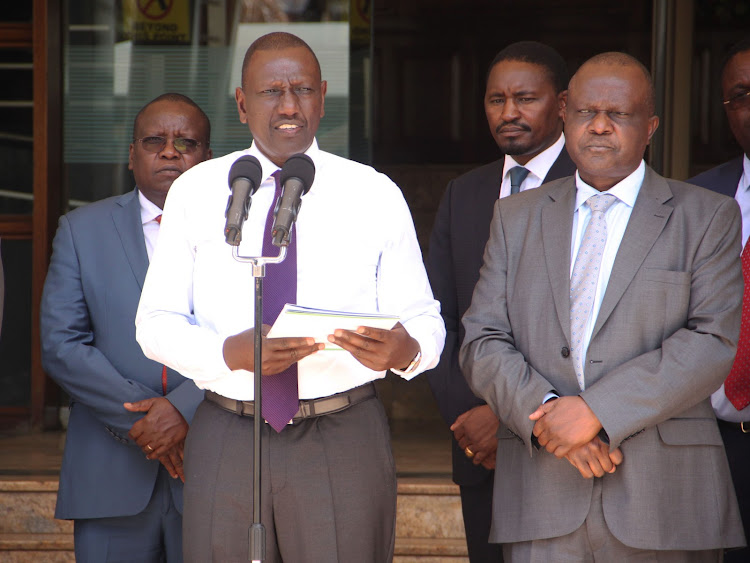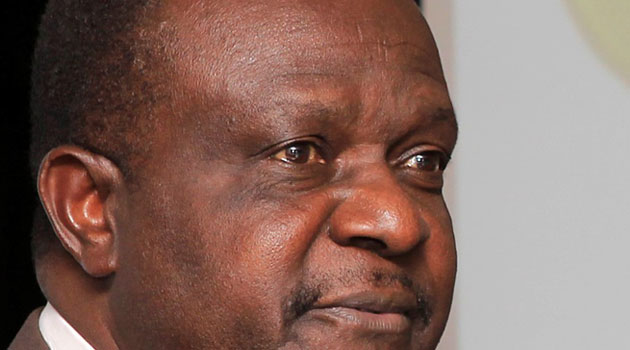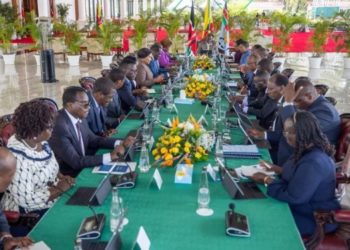With offices in 23 Arid and Semi-Arid Lands (ASAL) counties, the National Drought Management Authority (NDMA) is mandated to exercise overall coordination over all matters relating to drought risk management and to establish mechanisms, either on its own or with stakeholders, that will end drought emergencies in Kenya.
The authority was constituted under the National Drought Management Authority (NDMA) Act, 2016, having evolved from the Emergency Drought Recovery Project of 1992 and its successor, the ALRMP.
Six years since an Act of Parliament was established to ground the Authority in law, Kenyans are still feeling the pains of drought, to an extent of forcing Deputy President Rigathi Gachagua to beg for donations from the private sector.
The ‘begging’ comes a year after the government established a Ksh2 billion fund to help the Authority respond to emergencies arising from prolonged dry spells.
Read: President Ruto Meets Development Partners In Response To Drought Crisis
The fund was to operate as a common basket for contributions from the private sector, donor support, global climate change and disaster risk financing facilities.
“The fund shall not finance hazards which may include floods, epidemics, wildfires, terrorism and armed conflict,” regulations guiding its usage read.
Former Treasury CS Ukur Yatani said that the Fund would “facilitate faster, transparent, predictable and accountable release of funds for drought risk management.”
Unknown to many, the Authority has previously been unable to spend monies allocated by the government for lack of a legal framework. In fact, NDMA in 2019 forced to surrender billions of shillings to the National Treasury for lack of legal basis to spend the same. Whether the lack of a legal framework was by design or by default, it still leaves more questions than answers.
Back to the Ksh2 billion fund created in 2021. Half of the money was to be spent on investment in development activities and a half for drought response.
Read: CBK Differs With DP Rigathi Gachagua On Foreign Exchange Reserves
The rules introduced in 2019 also created a National Drought and Food Security Steering Committee which would be chaired by the Deputy President, then William Ruto. Other members would be the chairperson, Council of Governors, who shall be vice-chair of the National Steering Committee. The committee was tasked to report to the Cabinet.

Unfortunately, the chair is now begging, without explaining first how funds collected last year were used to mitigate drought effects in Kenya, which is the primary task of the authority.
According to Relief Web, the current drought (2020 – 2022) has been the most severe and longest with widespread livelihood loses and massive displacement of populations. Currently, more than 4.2 million people representing 24% of the ASAL population are facing high levels of acute food insecurity with about 2.7 million people in the Crisis phase and 785,000 people the Emergency state. This is a 10% increase from the same period in 2021 where 2.1 million people were categorized in as in emergency and crisis state.
Read: Nicholas Bodo Appointed Kenya Civil Aviation Authority Acting Director-General
The latest IPC report (July to September 2022) on the drought situation in Kenya indicates that; in the ten ASAL counties, more than 40% of the population is facing high levels of food insecurity compared to 24% in all ASAL counties of Kenya and this figure was projected to increase to 47.5% in the period October to December 2022 and will continue to worsen over time.
The report indicates that more than 2.4 million livestock, which pastoralist families rely upon for nourishment and livelihood, have died in Kenya. For example, in Marsabit County, the communities have lost more than 121,000 sheep and goats, 35,000 camels and 38,000 cattle in the last few months.
The operations of the authority now fall under the mandate of the Ministry of East African Community, the ASALs and Regional Development, now headed by former KenGen CEO Rebecca Miano.
Whether she transforms the authority to be fully operational or all remains the same, it is a matter of time, but as more time elapses, more livestock continue to die and worse still, Kenyans.
Email your news TIPS to editor@thesharpdaily.com
















